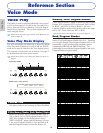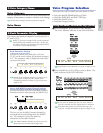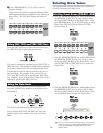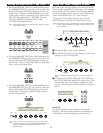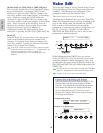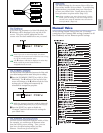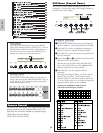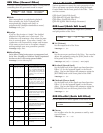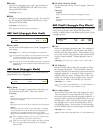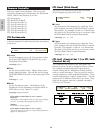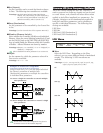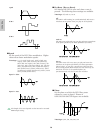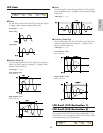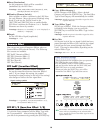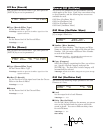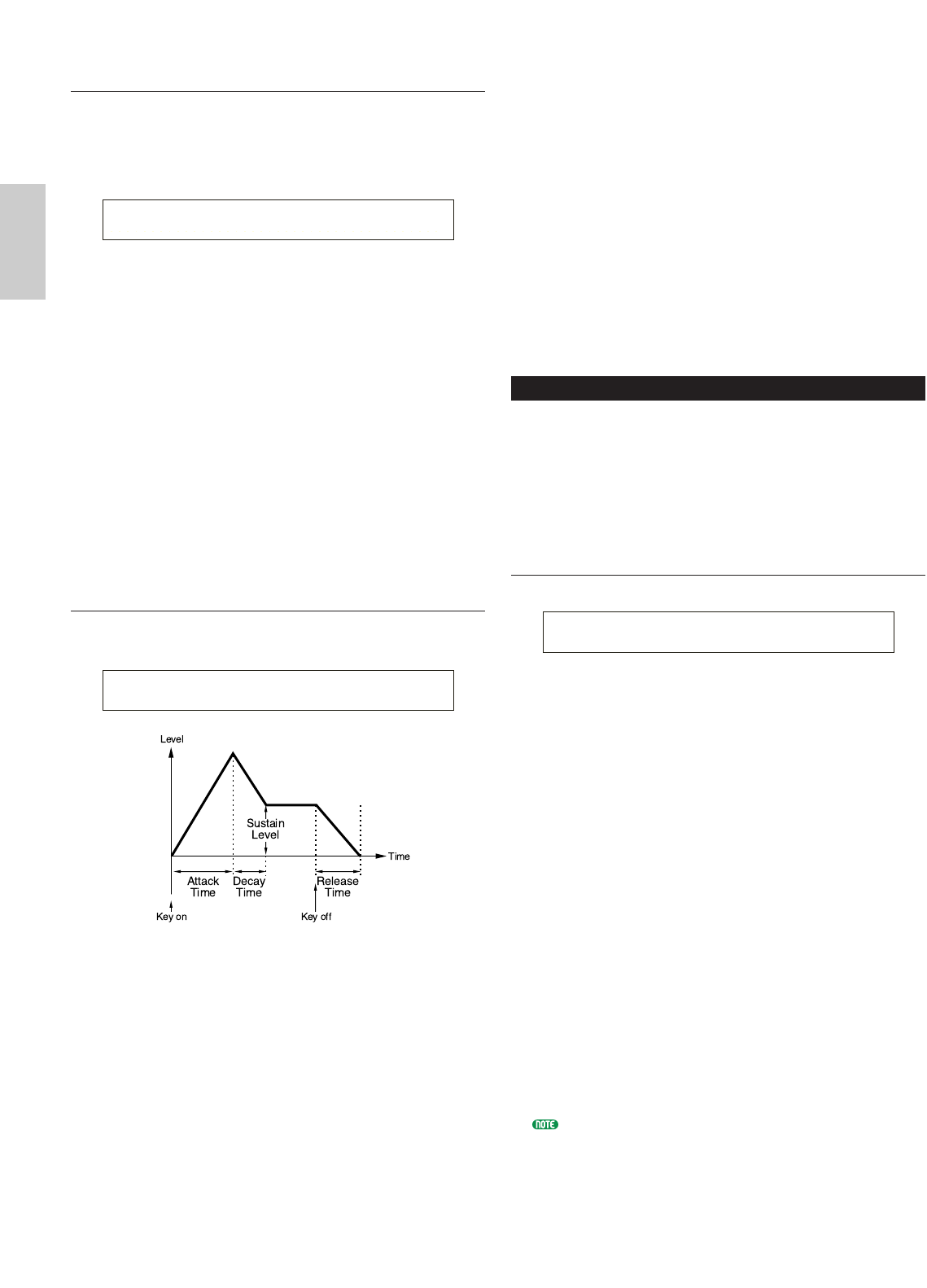
82
Voice Mode
QED Filter (Quick Edit Filter)
These parameters control filters which affect the tonal
quality of the Voice. If you are using LPF (Low Pass
Filter) and HPF (High Pass Filter) combined together,
the parameters in the QED Filter page only affects LPF.
■ Cutoff
Set the cutoff frequency. The frequency set here will be
a center frequency for signals to be filtered when they
pass through each filter. On the CS6x, the frequency
can be set by the [CUTOFF] knob on the front panel.
❏ Settings: -64 ~ 0~ +63
■ Reso (Resonance)
Set the amount of Resonance (harmonic boost)
applied to the signal around the Cutoff frequency.
This is a useful way of adding further character to the
sound. You can also adjust this parameter using the
[RESONANCE] knob on the front panel of the CS6x.
❏ Settings: -64 ~ 0~ +63
QED EG (Quick Edit Envelope Generator)
These four parameters control the change in the output
level of a Voice over the time that a note is played.
■ Attack
Set the transition time from the moment a key on
the keyboard is pressed to the point at which the
level of the Voice reaches its peak. You can also
adjust this parameter using the [ATTACK] knob on
the front panel of the CS6x.
❏ Settings: -64 ~ 0~ +63
■ Decay
Set the transition time from the point at which the
level of the Voice reaches its peak to the point at
which it levels off. You can also adjust this
parameter using the [DECAY] knob on the front
panel of the CS6x.
❏ Settings: -64 ~ 0 ~ +63
QEDíEG) Attack Decay Sustain Release
C 1234 +63 +63 +63 +63
QEDíFilter) Cutoff Reso
C 1234 +63 +63
■ Sustain
Set the level of the Voice maintained while the note
on the keyboard is being held down. You can also
adjust this parameter using the [SUSTAIN] knob on
the front panel of the CS6x.
❏ Settings: -64 ~ 0 ~ +63
■ Release
Set the transition time from the point at which the
note on the keyboard is released to the point at
which the level of the Voice reaches zero. You can
also adjust this parameter using the [RELEASE]
knob on the front panel of the CS6x.
❏ Settings: -64 ~ 0~ +63
Common Arpeggio
The following four parameters control the behavior of
the Arpeggiator.
ARP Type (Arpeggio Type)
ARP Limit (Arpeggio Note Limit)
ARP Mode (Arpeggio Mode)
ARP PlayEF (Arpeggio Play Effect)
ARP Type (Arpeggio Type)
These are the basic parameters of the Arpeggiator.
■ Type
Set the Arpeggio Type.
❏ Settings: (see the separate Data List)
Sq (Sequence):
Creates a general arpeggio phrase. Mainly octave up/down phrases.
Ph (Phrase):
Creates more musical phrases than Sq. Starting with
“Techno,” there are phrases for a wide variety of musical
genres, and for creating backing tracks for guitar, piano and
other instruments.
Dr (Drum Pattern):
Creates drum pattern-type phrases. Phrase genres covered
include rock and dance. This Type is ideal for use with
drum and percussion sounds.
Cl (Phrase Clip):
Select this type to a Clip Kit that is assigned with loop-
mixed or loop-divided Phrase Clips, to create a new
arpeggio pattern.
Ct (Control):
Creates tonal changes. No note information is created. The Key
Mode parameter in Arpeggio Mode must be set to “direct.”
■ Tempo
Set the Arpeggio Tempo.
❏ Settings: 25 ~ 300
[MIDI] is displayed here and the parameter cannot be
altered if MIDI sync is enabled (Page 167).
ARPíType) Type Tempo Switch Hold
C 1234 UpOct1:Sq 120 on on



